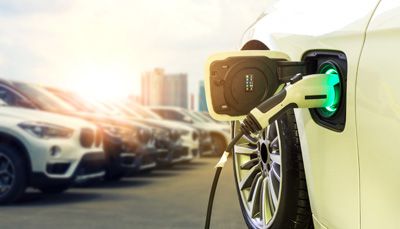How is the Coronavirus Pandemic Affecting Fleet Rightsizing?
Among the effects of the COVID-19 pandemic is the impact it is having on utility fleet rightsizing efforts across the U.S.
Traditionally, rightsizing is about understanding the values and measurements of the appropriate level of fleet utilization, according to Charles Guthro, vice president of global strategic services for ARI (www.arifleet.com).
The fleet management services company works through exercises with its customers to help shed light on strategies that enhance fleet productivity and maximize opportunities to generate revenue. But, Guthro said, some strategies have changed due to the coronavirus pandemic.
“Well, COVID-19 has flipped upside down even the best-thought-out plans. Now everyone is looking at it as, ‘How do we strip out cost from the business?’ Obviously, everyone’s revenues are significantly impacted,” he explained.
This, in turn, has put pressure on rightsizing efforts from a cost-reduction vantage point, Guthro added.
“It certainly has driven a significant amount of rigor around the challenges of having the optimal fleet size. We have been seeing the push towards savings, rightsizing and utilization,” he said. “But when you just go and remove too many vehicles from your fleet, you’ll likely feel that pain as your business begins to stabilize and even more so as you ratchet back up and your work starts to incrementally grow again.”
Rather than removing vehicles from service, there is an opportunity to examine how the vehicles are being used. Parking a vehicle, for example, is a viable strategy in some scenarios, Guthro said.
“But often,” he said, “if you look at your vehicles holistically – buy, drive, service, sell – you can typically find ways to implement small, incremental changes that together can make an even greater impact.”
For instance, using telematics and advanced analytics helps fleet operators gain additional insight into their fleet performance, allowing them to make better, data-driven decisions. “What you’re seeing is a significant appreciation for the variable costs and how implementing basic best practices can quickly add up,” Guthro said.
Different Approaches for a Different Time
A purchase/lease-back scenario may help some fleets overcome their current challenges without hindering future growth. According to Guthro, ARI will buy vehicles from its customers and then lease them back. The option does not affect a customer’s long-term outlook, he said, and provides the opportunity for them to better control operating costs as they work to stabilize their business.
Michele Davis, a fleet manager for Washington Gas, which provides natural gas service to customers in the District of Columbia, Maryland and Virginia, said the company traditionally rightsizes fleet utilization and underutilization to see if vehicles can be repurposed elsewhere within the company.
If a vehicle is underutilized and there is no need for it within Washington Gas’s fleet, it can be sent to auction to reduce annual costs, Davis said. But with concern over the novel coronavirus, the company has altered its methods, too.
“With the temporary shutdown of vehicle manufacturing plants and the occasional limited availability of OEM parts, we have not sent vehicles to auction as expeditiously as usual should cannibalization of those vehicles become necessary,” she said.
Davis added that Washington Gas has made the decision to assign more of its fleet assets to a take-home vehicle status – temporarily – for employee safety, as it limits the number of employees riding together and sharing vehicles.
CPS Energy’s Efforts
Fred Bonewell, chief security, safety and gas solutions officer for CPS Energy, which provides natural gas and electric service to customers in and around San Antonio, said about half of the utility’s skilled-craft fleet is currently being dispatched from home.
He also explained that, even in light of the pandemic, CPS Energy’s rightsizing effort “really hasn’t changed because our fleet vehicles predominantly are aerial bucket trucks that take about six months to manufacture.”
Since late February, CPS Energy has not accepted any new vehicles into the fleet. Bonewell said, however, that CPS Energy has conveyed a new contract with a firm over the next five years. One-fifth of that contract is to be completed by the end of the year.
“We have not received any indication at all up to this point that any of the prospective orders are going to be delayed,” he added.
About the Author: Max Chesnes is an award-winning environmental journalist based in Vero Beach, Florida. Follow him on Twitter at @MaxChesnes.




